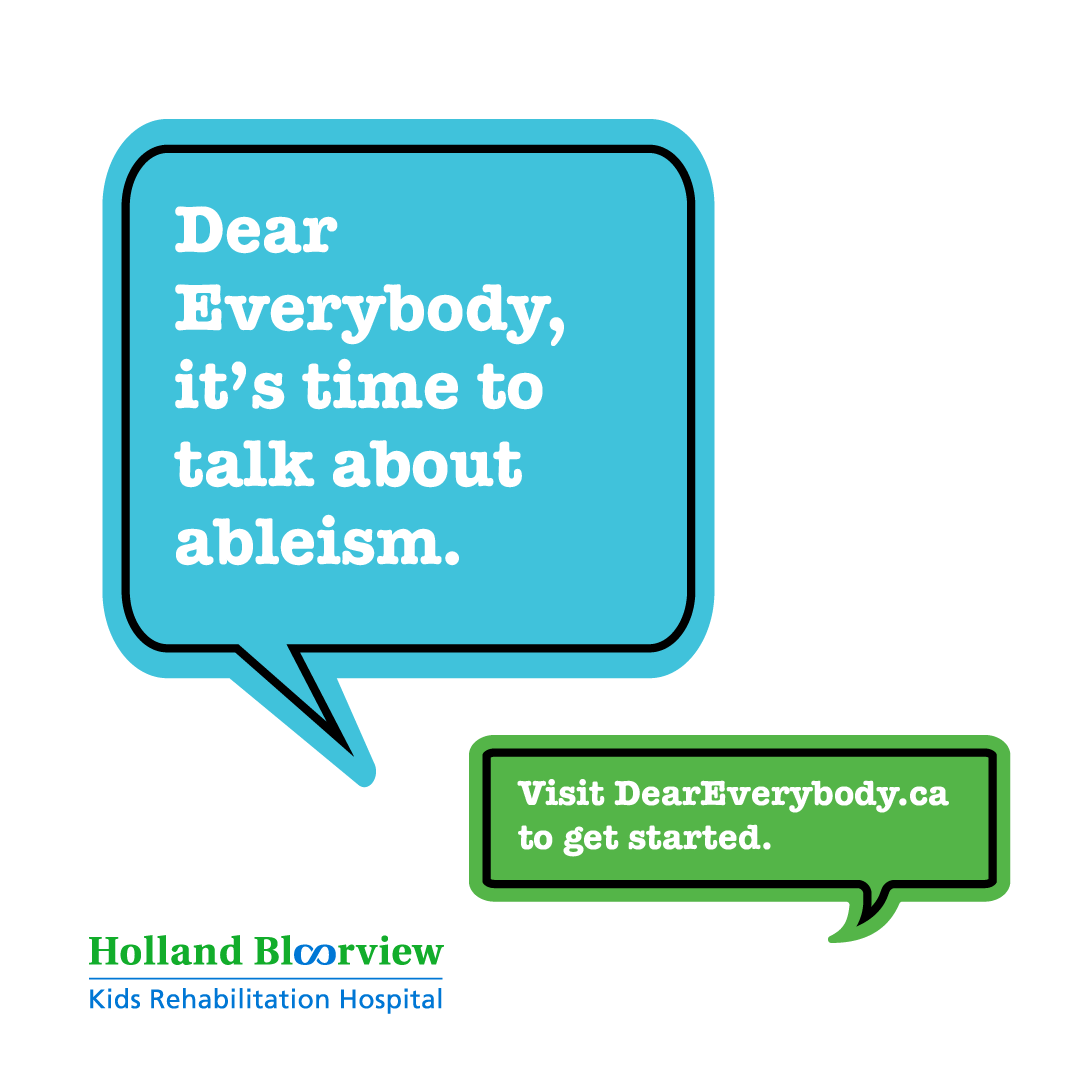For partners
What is ableism?
According to the dictionary ableism is discrimination against disabled people. (From dictionary.com). But what does that mean? Let’s look at that definition again:
“Discrimination against disabled people“
discrimination
Unjust and prejudicial treatment towards a group or individuals. Ableism involves a discrimination towards people with disabilities.
Unjust and prejudicial treatment towards a group or individuals. Ableism involves a discrimination towards people with disabilities.
disabled people
People with disabilities can include people with physical, intellectual, behavioural and mental health disabilities, and other medical complexities.
People with disabilities can include people with physical, intellectual, behavioural and mental health disabilities, and other medical complexities.
Ultimately, ableism is the discrimination towards someone based on their abilities, often favouring those who do not have a disability and seeing less value in those that do. Ableism can be reflected in actions, words, behaviours, and access issues.
People’s understanding of ableism may be influenced by other parts of their identity, like their experiences as a member of the LBGTQ+ community or as a Black, Indigenous or person of colour.
People’s understanding of ableism may be influenced by other parts of their identity, like their experiences as a member of the LBGTQ+ community or as a Black, Indigenous or person of colour.
Here are some examples of ableism:
- At school: Awards for perfect attendance exclude students whose disabilities mean that they cannot always be at school
- At work: Inaccessible workspaces, for example not having accessible desks or the ability to work remotely, exclude people with disabilities from participating in the workforce
- In the community: Events and spaces that don’t account for physical and sensory needs exclude people with disabilities
- In our thoughts: The assumption that people with disabilities want or need to be ‘fixed’
Here are some examples of internalized ableism:
- Trying to hide one’s disability if they can
- Feeling shame about your body and/or disability
- Feeling unworthy of respect, friendship or love
- Feelings of “otherness”
So, how can we avoid ableism?
Ableism often comes from a lack of awareness about disability and the systemic physical and attitudinal barriers that exclude people within the disability community. Follow these steps to increase awareness and support meaningful change for people with disabilities:
- Educate yourself by going out of your way to find the resources, without relying on those with lived-experience to answer all your questions.
- Talk with kids about similarities and differences between people, including, but not limited to disability
- Check out these resources to start the conversation about ableism. These resources are a great way to start learning about disability and ableism, but the more you learn, you realize that everyone’s experiences are unique. It’s important to ask individuals what makes them feel safe and respected when it comes to discussing disability
- Find ways to make sure all activities and events are inclusive so that kids with and without disabilities can participate and engage together.
- Read and share stories that explore issues of disability rights. You can always find new stories on the Holland Bloorview website and BLOOM blog.
- Sign up for our newsletter to stay informed about how you can #EndAbleism today.
Dos and Don’ts of Ableism
Don’t
Exclude someone from a game or activity because of their disabilityTalk to a person with a disability like they are a baby
Design spaces that are not accessible to people with disabilities
“Help” a person with a disability without asking if they need help
Use harmful, outdated language about disability
Refuse to change plans to accommodate someone’s needs
Be patronizing and view someone with a disability as “inspiring,” simply because they exist and are out during their day-to-day
Make assumptions about what a person with a disability can or cannot do
Cast someone who does not have a disability to play a character with a disability
Do
Change the game or activity so that everyone can participateTalk to a person with a disability like you would anyone else
Hire qualified consultants with lived-experience to design accessible spaces
Respect boundaries and help only when asked or if they accept your offer to help. Consent matters
Ask what language someone uses to refer to their disability
Create plans that accommodate and include everyone’s needs
Be inpsired because of what they have accomplished, not in spite of or because of their disability
Assume that people are capable unless they say otherwise
Cast only actors with disabilities to play characters with disabilities
(Adapted from Access Living)
